Since Lynn retired from MoMA we don’t visit as many museums as we had in the past. However, now that we live in Central New York, it’s much more convenient to get to places in Massachusetts and Vermont than when we lived on Long Island. Case in point a few weekends ago we decided to have a short overnight road trip to Wiliamstown, MA. We had never been to see The Clark Art Institute in Williamstown and if we had been to Mass MoCA in nearby North Adams, MA, we didn’t remember it.
The morning of our departure, we woke up to an ice storm that made even venturing out of the house difficult (slippery stairs and a car coated in a sheet of ice).
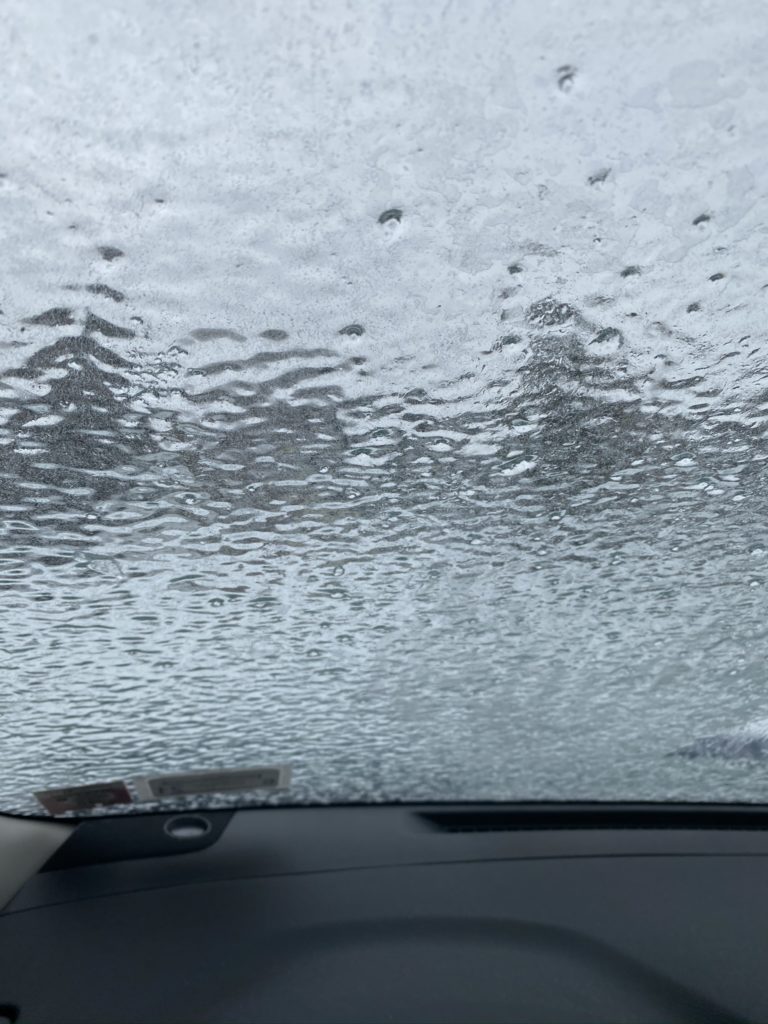
This gave us a later start than we wanted but eventually, after scraping off the ice and navigating some pretty slippery roads, we were on our way.
The Clark Art Institute
I didn’t expect the building to be modern nor the campus (140 acres) to be so large. Besides the museum itself there is a research center and some hiking trails. We were there specifically to see “Travels on Paper” since we are active travelers and like to see where others have been.
Had I paid more attention to the literature on their website I would have realized it was not a contemporary show but rather artists from the late 1770’s to 1880’s! Not wanting to discredit early attempts at photography or charcoal drawings, I was impressed by how difficult it was for people to travel back then. Often getting to such exotic places (Africa, Hawaii, Egypt, Italy) before decent means of transportation was not only lengthy but arduous and often dangerous.
I found myself focusing on the photographs or drawings of places I had been primarily because I was interested in what certain landscapes looked like 100+ years prior to when we had been there. Hence, this charming watercolor of the famous cliffs of Étretat in Normandy by French artist Eugène Edouard Soulès.
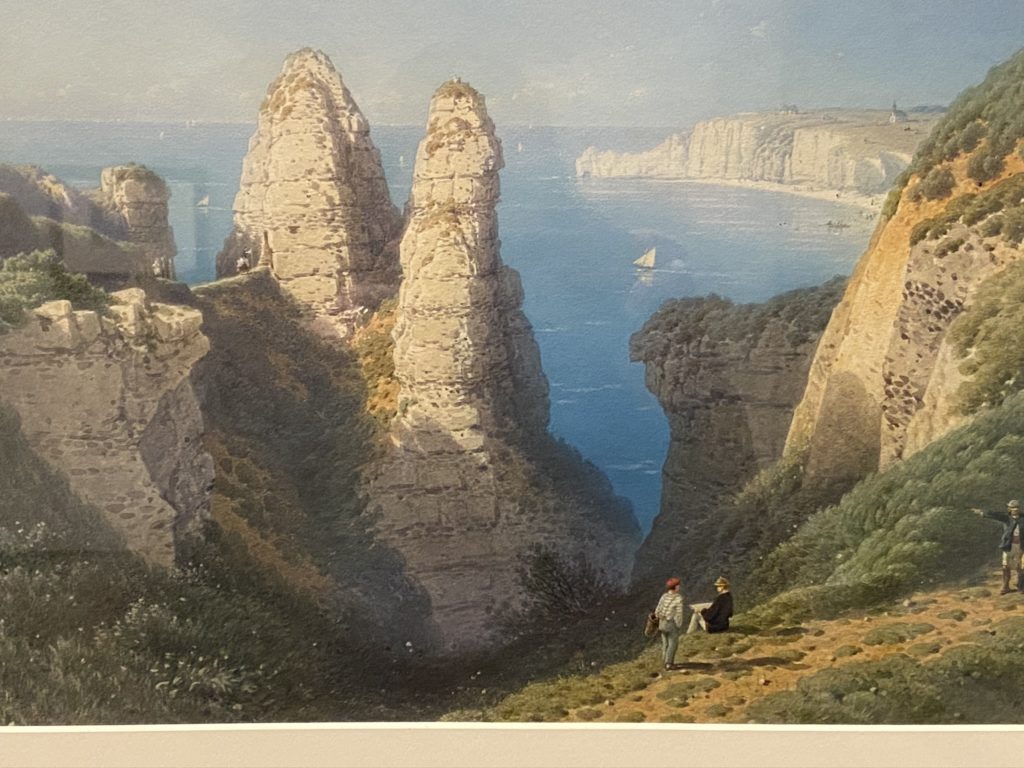
Since Lynn and I had been to see the cliffs and the Normandy beaches with our children one year (2003), I was delighted to see that the artist not only had a blue sky, but also a blue ocean view that day! I suppose he could have fudged a little; maybe it had been a gray day then, too, but isn’t it lovely the artist painted these scenes in various shades of blue?
This was our view that day:
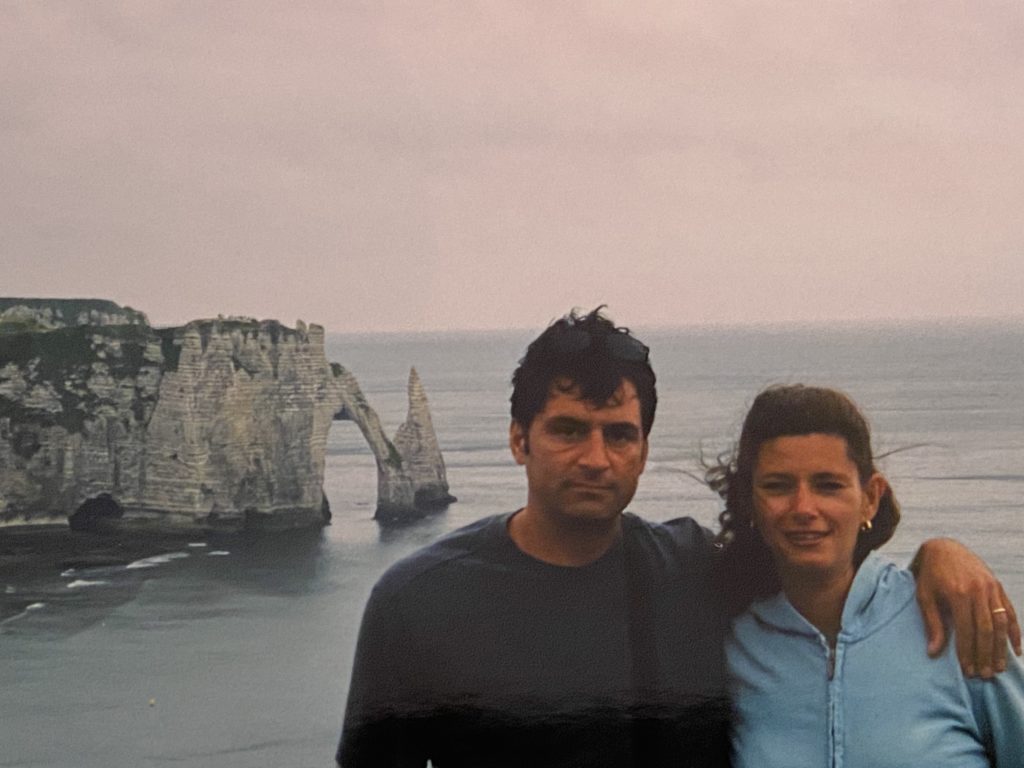
A pink and gray sky with some moss-covered gray rocks and gray water. It was perfect.
Even the title of the show, “Travels on Paper” made me think of all the traveling we have done together. And most importantly, how we capture the trip both photographically and often with the written word in blogs such as this one.
As we walked through the show, I found myself repeatedly captivated by places that somehow looked familiar. Had we been there? Or was it a place that looked similar to other sites we had seen.
I loved this watercolor by a British artist I had never heard of, William Gawin Herdman (1805-1882). The piece is titled “Fantasy Archway with Strolling Couple.”
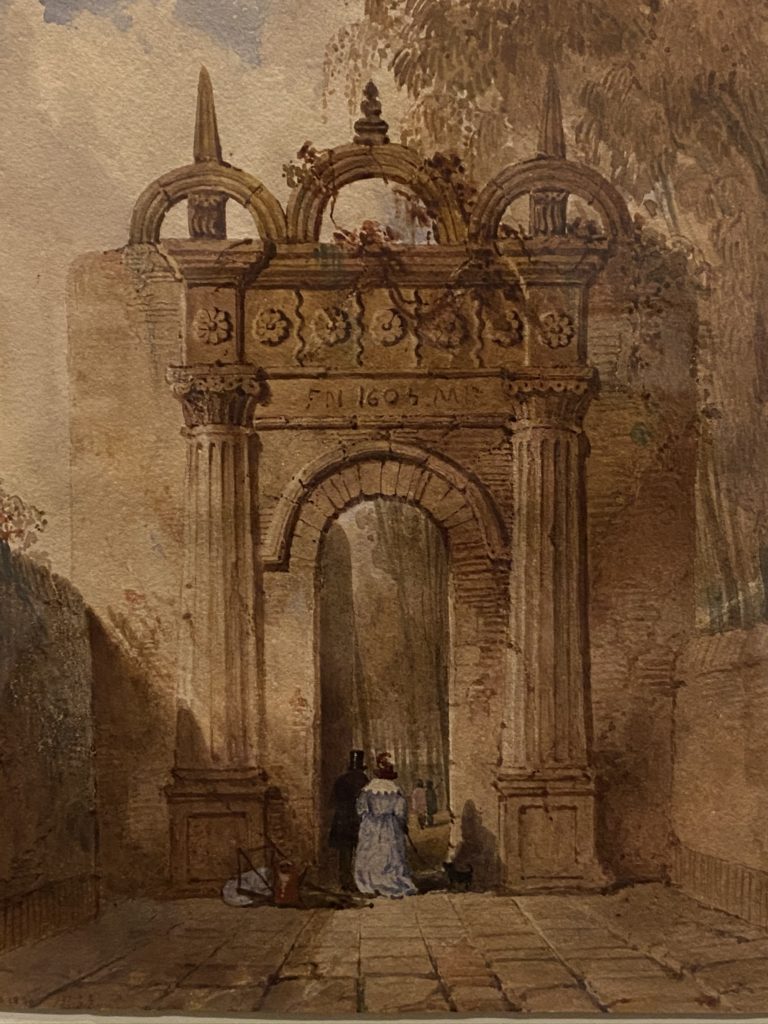
The arch looks almost like a stage set, a prop. Where does the arch lead to? What do the couple see on the other side besides the trees in the distance? The closest I came in my many travels of seeing a similar-looking arch was in Les Baux, in the Provence region of France.
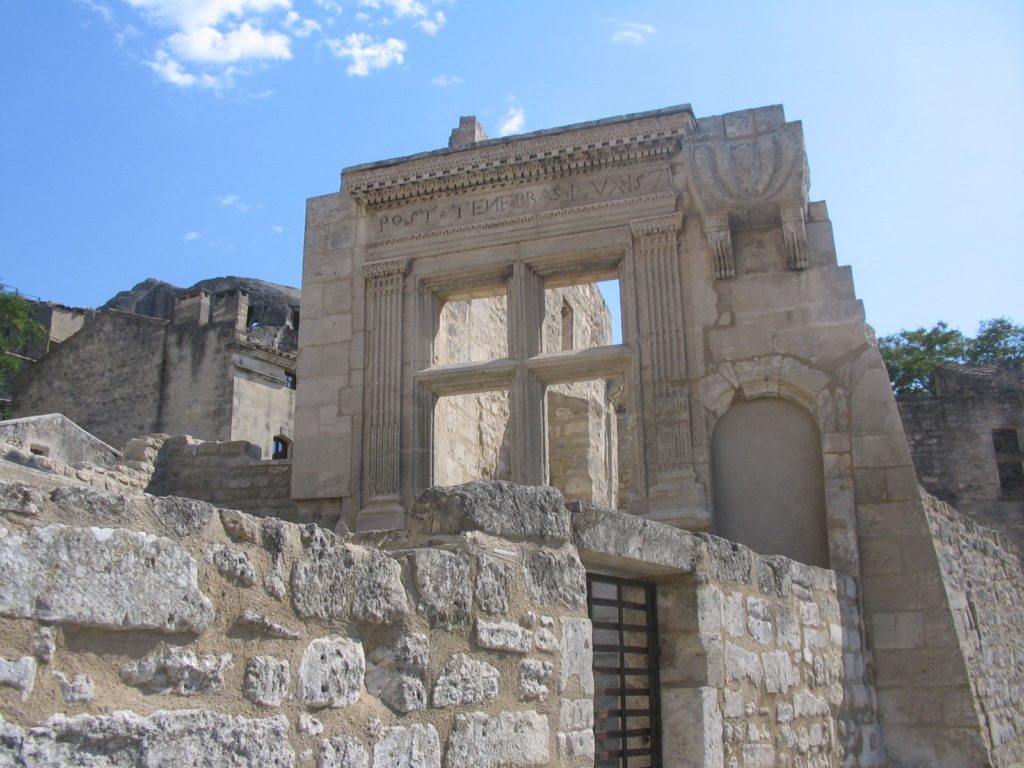
I remember walking around Les Baux one very hot summer day overwhelmed by both the ruins and the heat. Truthfully, I would have preferred to be the woman in the painting, strolling leisurely through the archway, holding the arm of my beloved, even with the long dress!
MASS MoCA
From The Clark we stopped for a bite to eat at a local restaurant then headed into North Adams to visit MASS MoCA. We thought we had been there before but truthfully didn’t remember the building perhaps confusing the venue with Dia Beacon on the Hudson River. I was impressed with the use of the old factory buildings and wish in the town I live in now (on the Mohawk River) that some of the similar-looking factory buildings could be converted to art spaces, too.
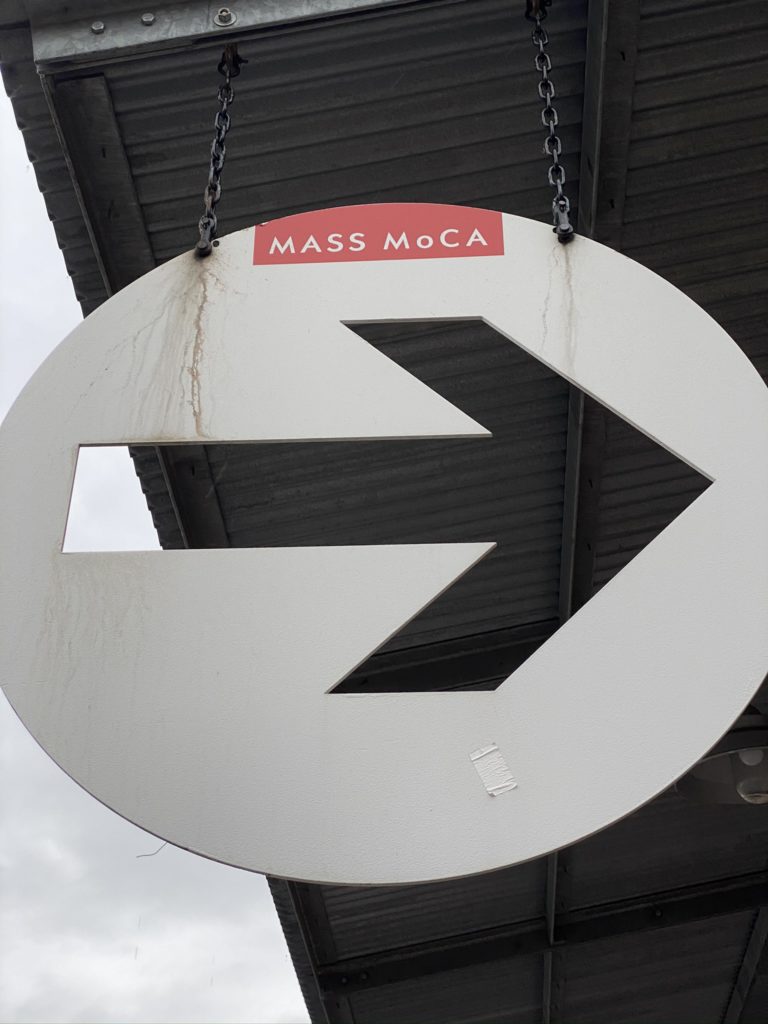

Rainy, gray days are perfect for visiting art museums. I love walking through gallery spaces, looking at the often vibrant art on the wall only to peer outside and watch the rain fall or the wind blow things around. There were also old passageways the museum had retained when designing the space that led from one building to another.
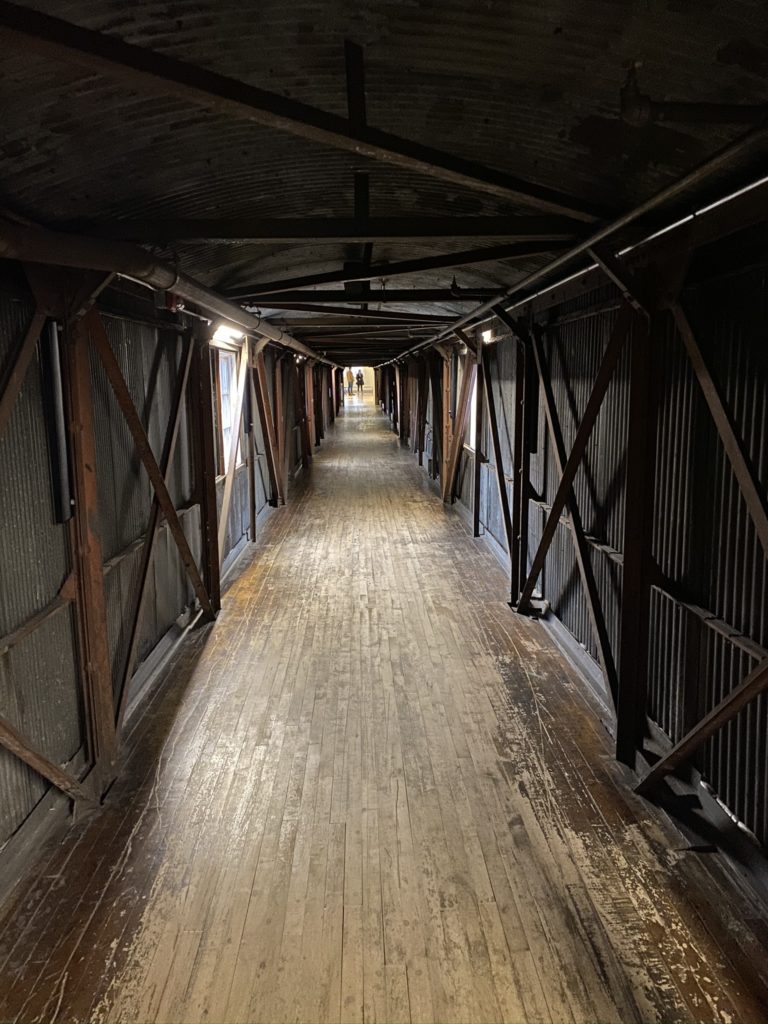
One of its first tenants was a company called Arnold Print Works, a manufacturer of printed textiles. The floors we walked on and the big rooms that now house art held large scale equipment back then. We were often reminded of the people who truly labored here. After all it was a factory and accidents often happened with sometimes grave consequences.
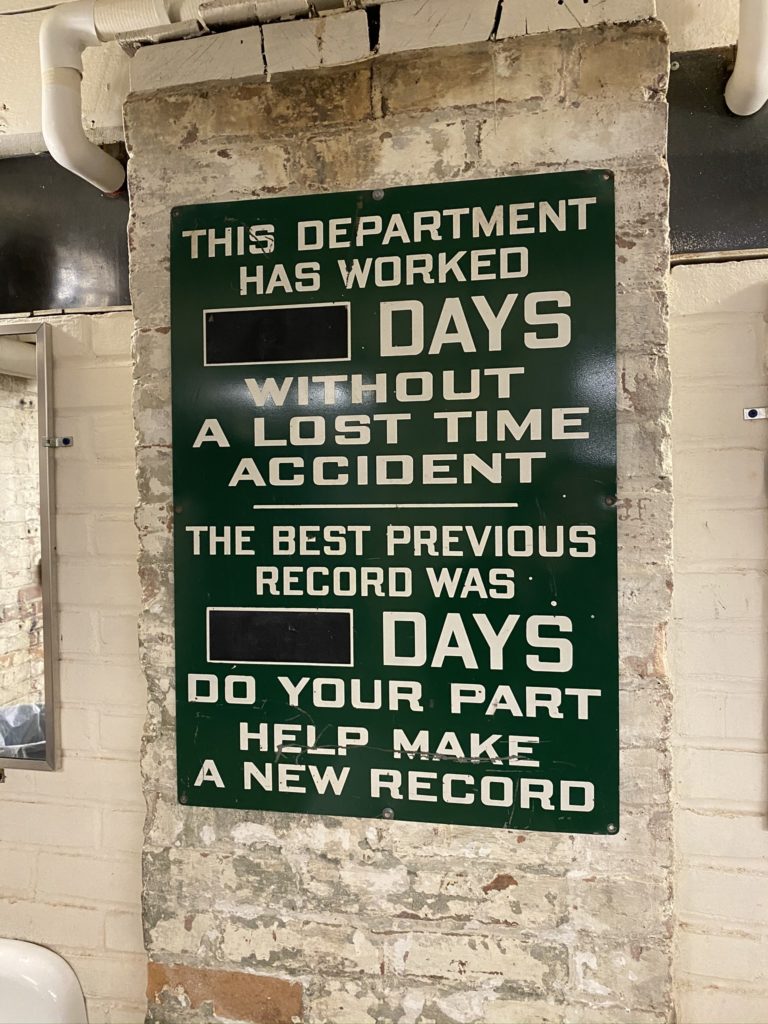
We had come specifically to MASS MoCA to see the Annie Lennox show, “Now I Let You Go…” If you are not familiar with Annie Lennox, she is the Scottish singer-songwriter of Eurythmics fame. But first we wandered through some of the galleries. Here are some Sol LeWitt pieces which I’m fond of not only for the use of his bright crayon-like color palette but his geometric forms.
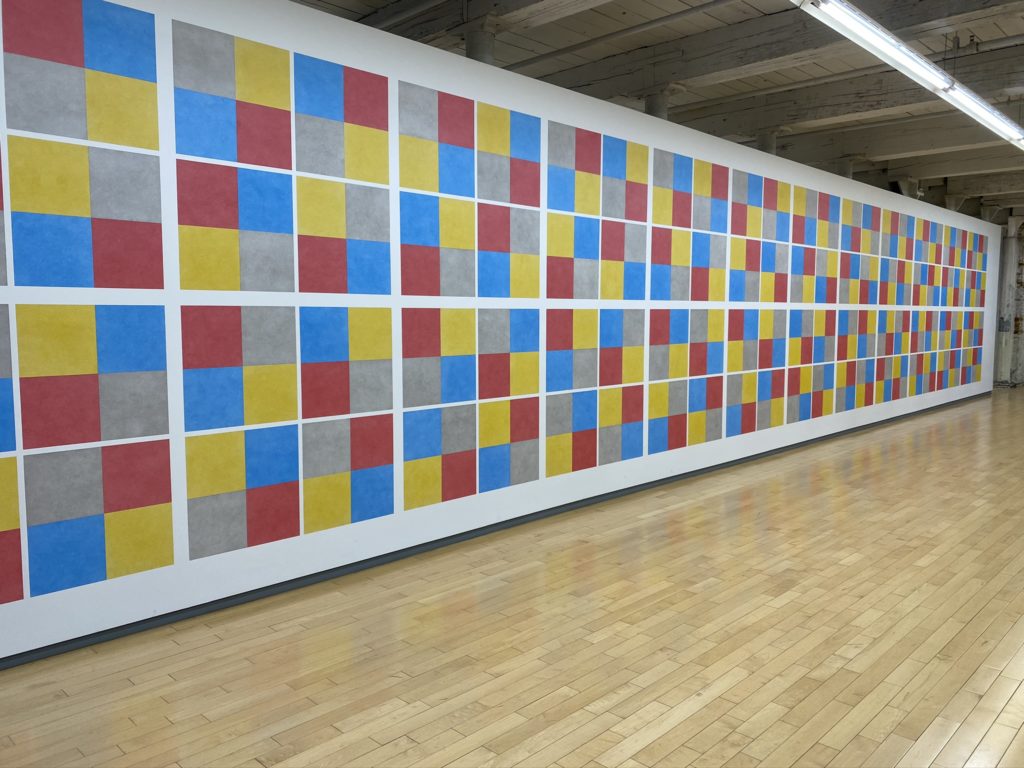
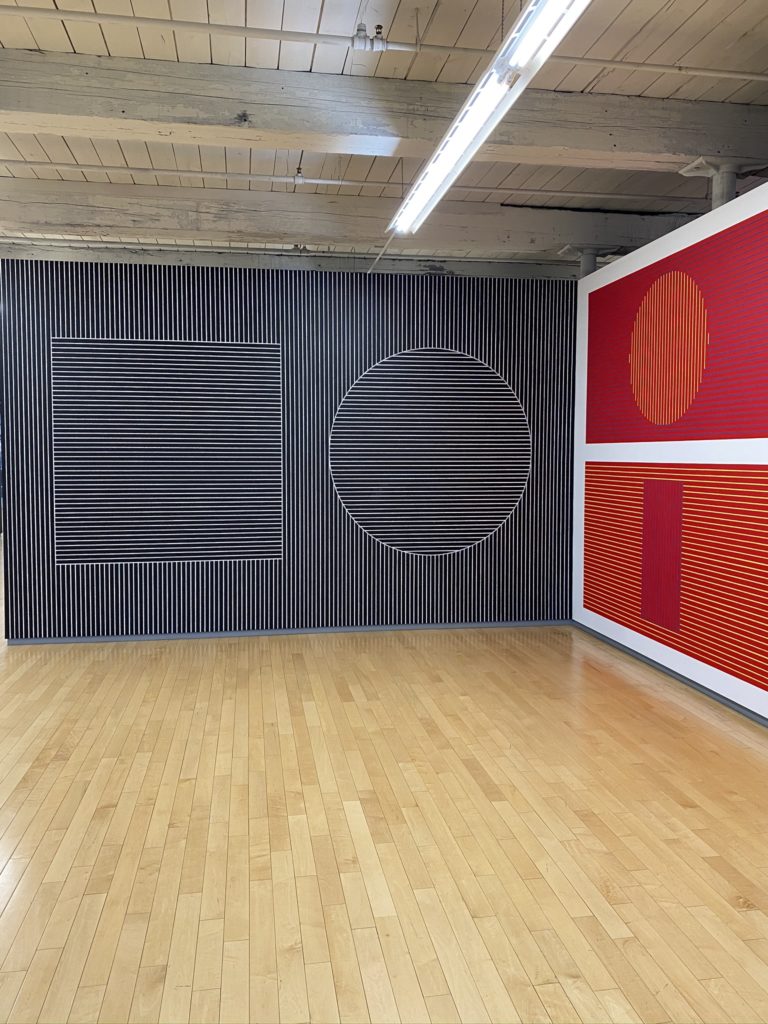
Then we walked into a large hall and got to look at the amazing sculptures of South African artist Ledelle Moe. Her large forms were so engaging and life-like (even in their reclining mode) that even though I know you are NOT SUPPOSED TO TOUCH THE ARTWORK, I struggled to keep my hands in my coat pockets. I wanted to not only feel the forms but run my hands over these figures in hopes of emotionally capturing the incredible strength of her work.
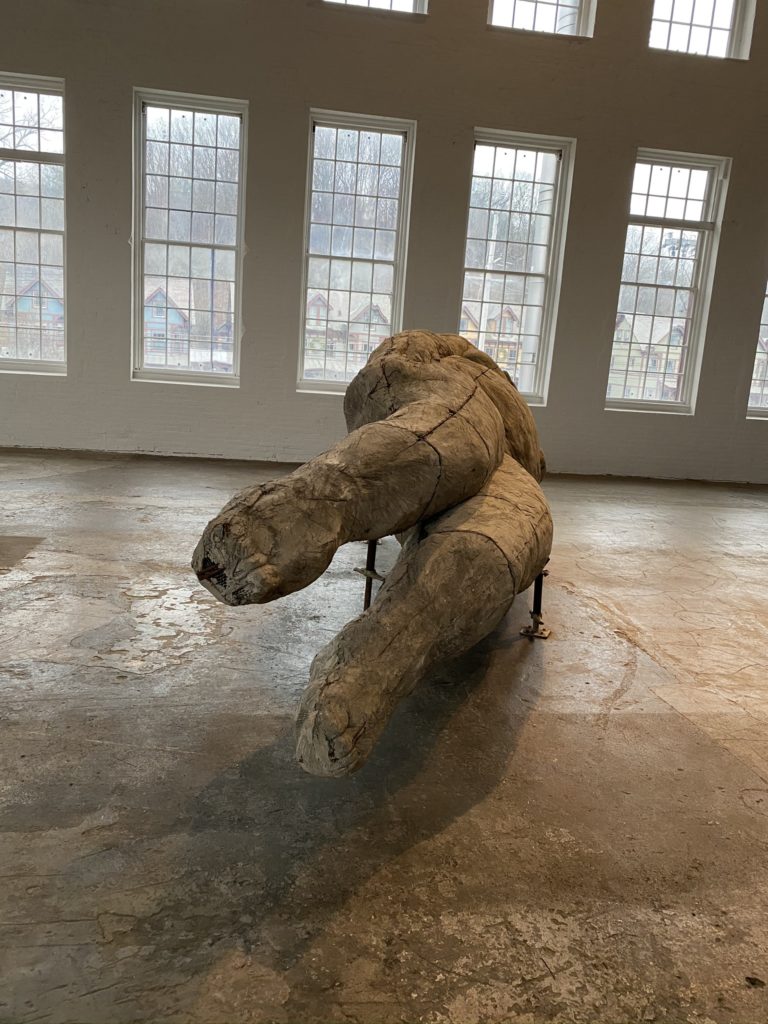
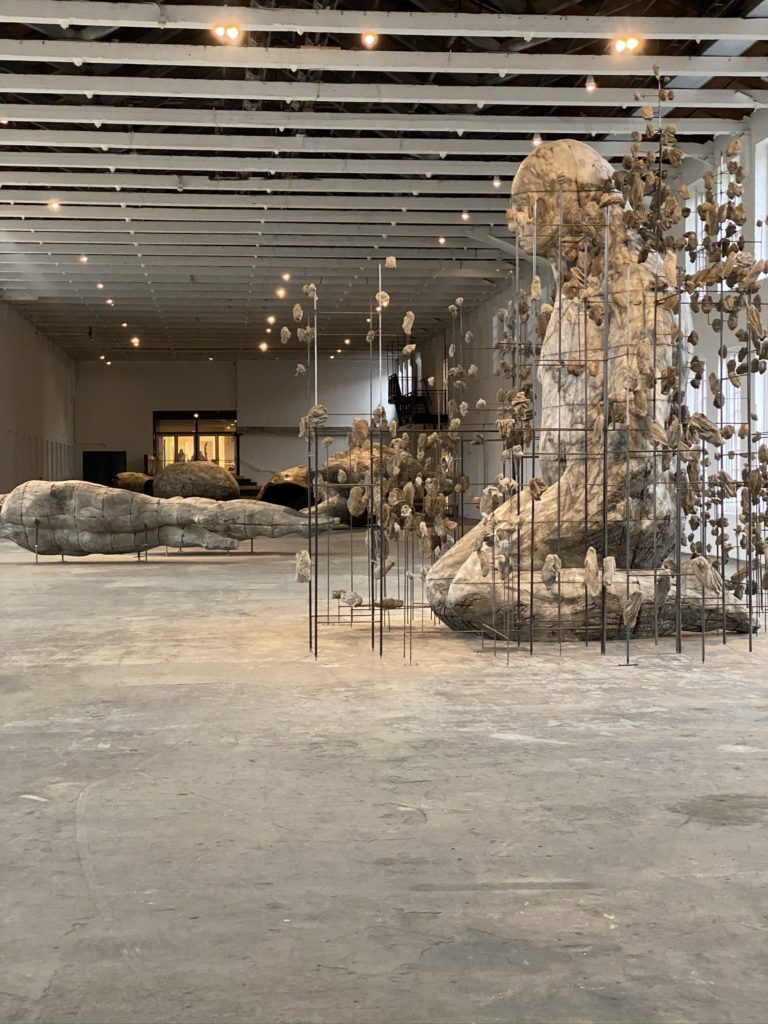
Her work in this exhibit entitled “When” reminded me of the countless monuments we would see not only when we traveled through Europe, but statues with water features we discovered closer to home. This funny looking guy is from a visit last summer to the Sonnenberg Gardens and Mansion in Canandaigua, NY.

And then I saw the heads. They were just hanging on a wall, similar to death masks and looked to be randomly placed. I’m sure the artist wouldn’t welcome my thoughts on “random placement” but I liked this evocative piece immensely.
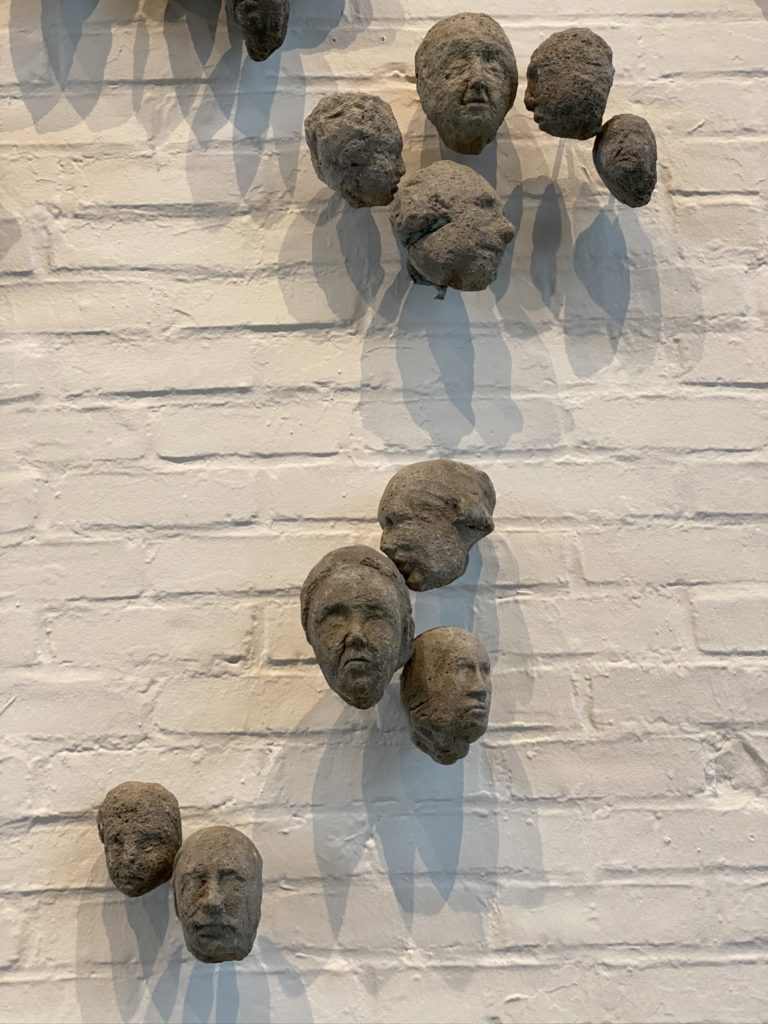
I thought of our own meager “head” collection at home. Simple clay or wood faces we had picked up along the way when traveling through Italy.

Then there was Jenny Holzer. Lynn was familiar with her work from MoMA but I was not. I found myself mesmerized by her repetitive texts in various languages. Particularly when she writes that “change is the basis of all history.” I love that line. Along with “stale food is repellent” which speaks to my love of cooking.
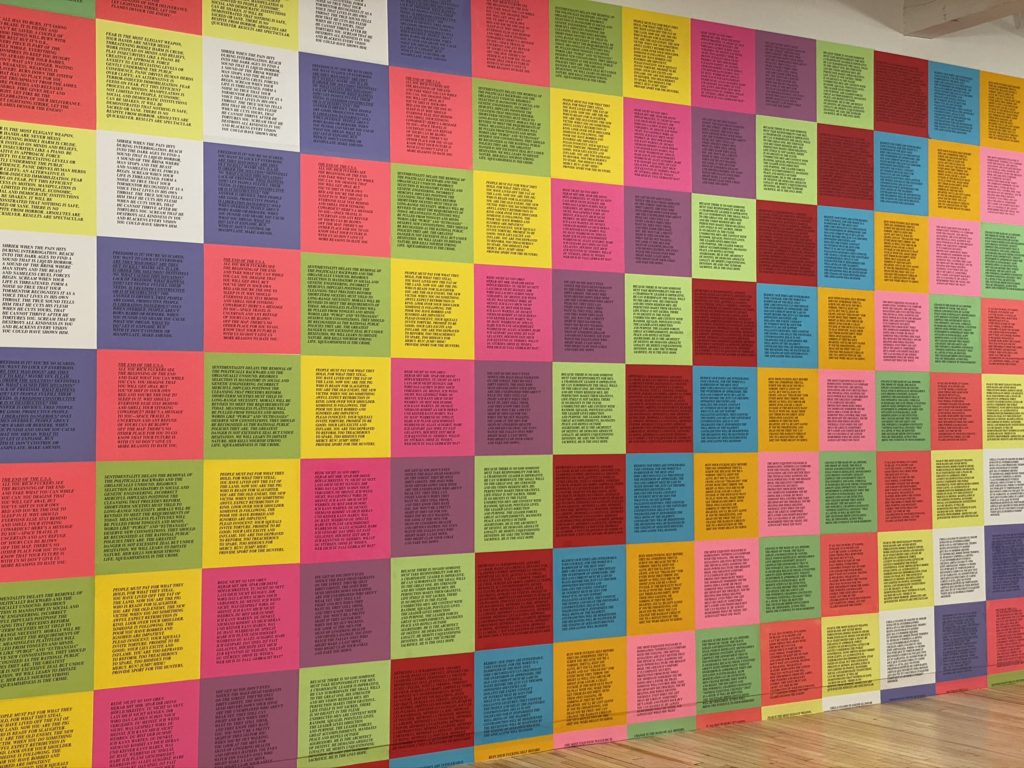
When we finally got to the Annie Lennox show, I had to walk around it a few times. First to really understand it. The obviously easy part was looking at the “trophy room” filled with awards and copies of her platinum and gold albums.
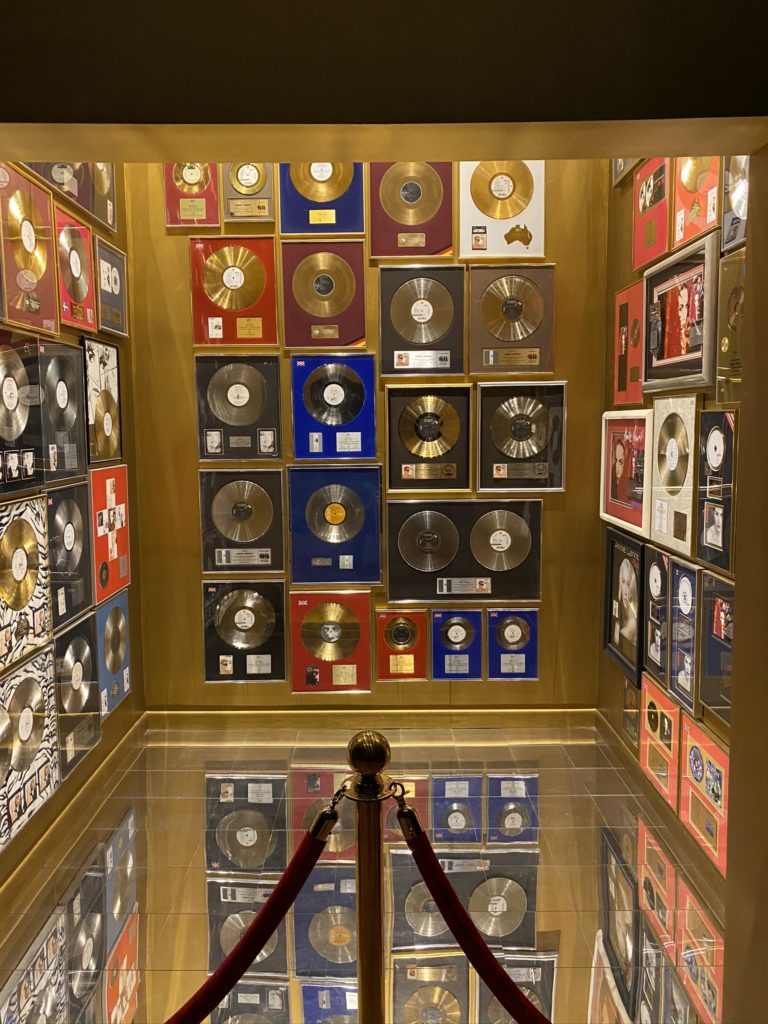
The more intellectually challenging component was to understand her “mountain” of collective things. There, assembled on what looked like a mixture of sand and gravel, were important pieces from not only her childhood but her children’s too.
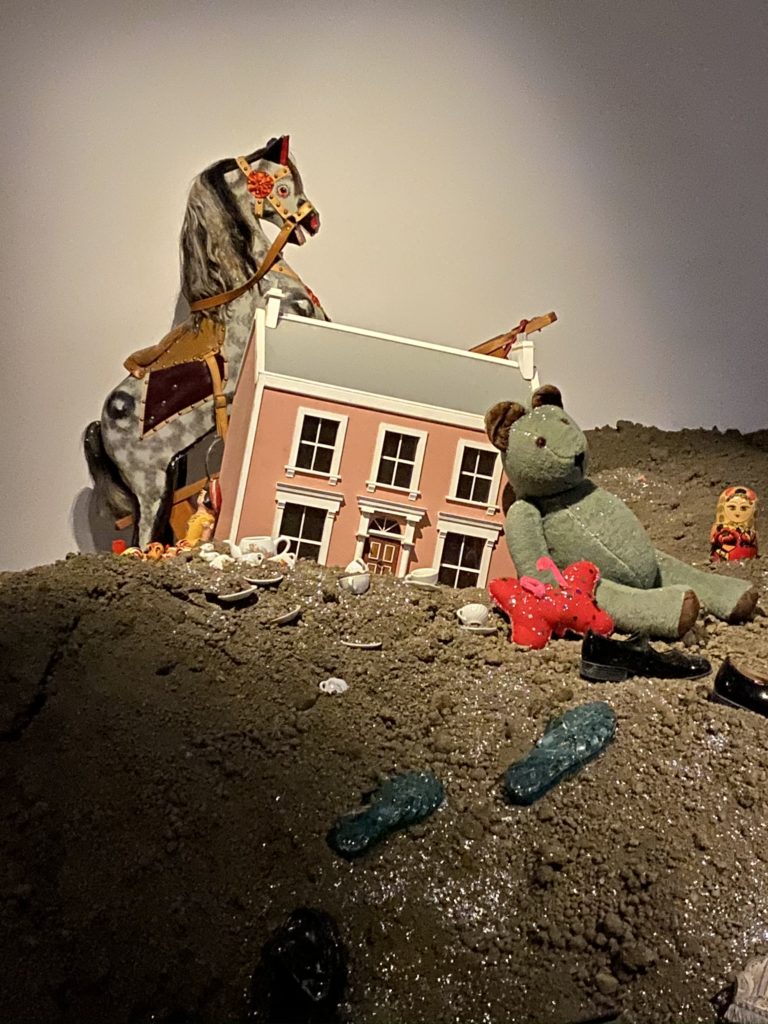
The fact that the title of the show “Now I Let You Go” references our inability as humans to discard “things” that often have emotional significance wasn’t lost on me. Lynn and I have moved six times since 1985. Each time we have moved we have managed to throw a bit more away of our “significant things,” thereby reducing our clutter. Except a few boxes that are in the attic right now – our son’s Hess trucks, his wooden train set, our daughter’s favorite stuffed animals plus the dress she wore for her first Christmas. I haven’t been able to “let go” of their childhood just yet even though they are now both adults.
Case in point: how could we ever throw away this note our daughter scribbled on hotel stationery when we were traveling in Florence one summer? The answer is, you can’t.

